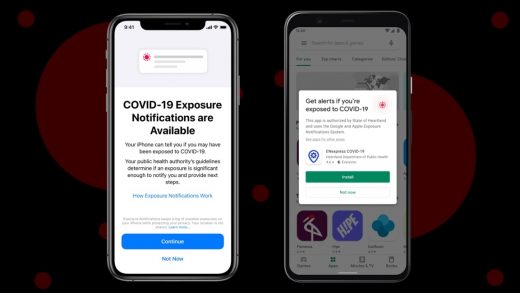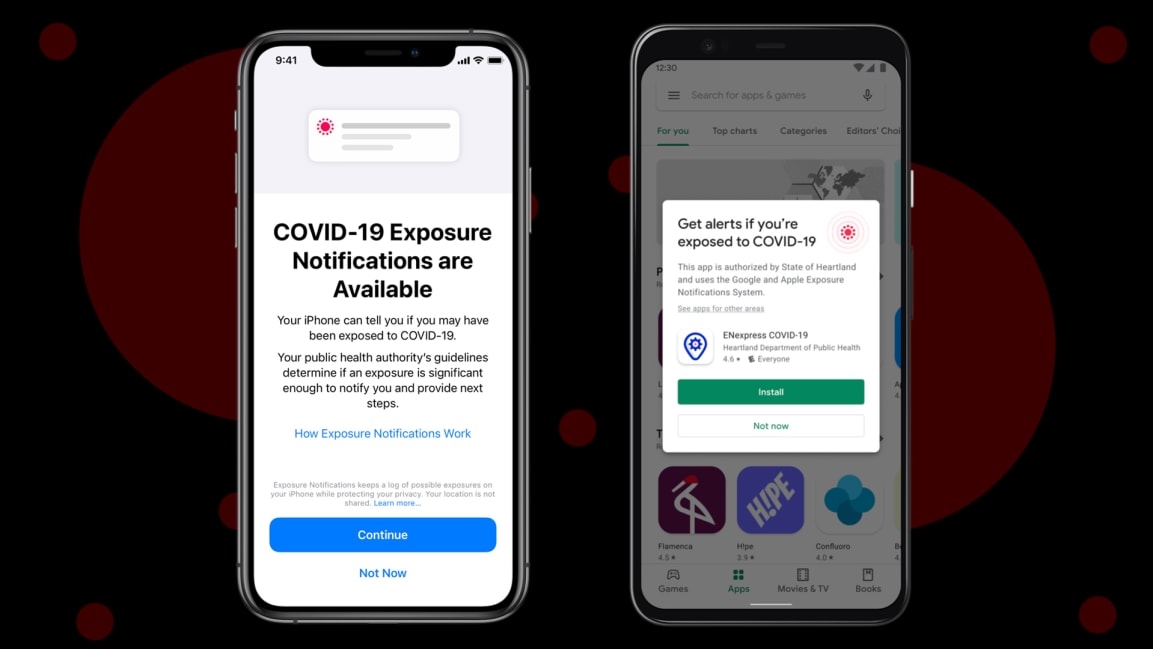Google and Apple will now autogenerate COVID-19 contact tracing apps for states
After slow adoption, Apple and Google have developed an automatic way to generate COVID-19 exposure notification apps for public health authorities. Their joint Exposure Notification platform, which uses Bluetooth to tell people if they’ve come into contact with someone who has COVID-19, was launched in May. Since then, only six states have signed on. Now, with Exposure Notification Express, the companies are hoping to create an easy way for states to get onboard.
Google and Apple say that public health authorities can now submit files outlining their parameters for COVID-19 Exposure Notification triggers as well as guidelines that help users understand what to do if they receive a notification. Using this basic framework, Google and Apple can autogenerate simple apps that notify users if they were exposed to someone with COVID-19. Exposure Notification Express apps will be available Tuesday with the deployment of iOS 13.7. Android will roll out Exposure Notification Express later this month. Google and Apple say they are launching Express months after its platform first rolled out because it was faster to launch an API first.
So far, six states (Virginia, North Dakota, Wyoming, Alabama, Arizona, and Nevada) have launched Exposure Notification apps using Apple and Google’s API. That’s markedly slower than other Western countries, such as Ireland, Canada, and Germany, which have adopted the platform nationally. Both companies say another 25 states are exploring possible uses but have yet to launch.
“What we were seeing is that many of them were having difficulty finding the resources and technical capability to select an app developer and build a custom app themselves,” said David Burke, VP of engineering for Google, during a press briefing about the new technology.
Maryland, Nevada, Virginia, and Washington, D.C., will be among the first states and municipalities to use Express. The Express apps are not customized, though they can feature a public health authority’s name and logo. Instead, these apps will be relatively generic and focus exclusively on pushing exposure notifications. Exposure Notifications are meant to supplement contact tracing efforts. A study out of Oxford University suggests that exposure notifications, even if lightly adopted, can have an impact on transmission rates.
Building an app from scratch and maintaining it is a potentially costly proposition for health departments. Of course, the advantage of building a custom app on the Exposure Notifications API is that it can have added functionality, such as a symptom checker. But some users may prefer an app that requires less interaction, as Exposure Notification Express does. As a result, Google and Apple say, some states may opt for both a custom app as well as Express. To make sure the system catches exposures across state lines, Apple and Google are working with the Association of Public Health Laboratories on setting up a national server.
Express maintains all the same privacy controls that the API provides. Neither company receives personally identifiable information about the user, nor do the public health departments that feed data into the Exposure Notification system. Instead, exposures are communicated between devices over Bluetooth using a set of rotating unique identifiers.
(31)



